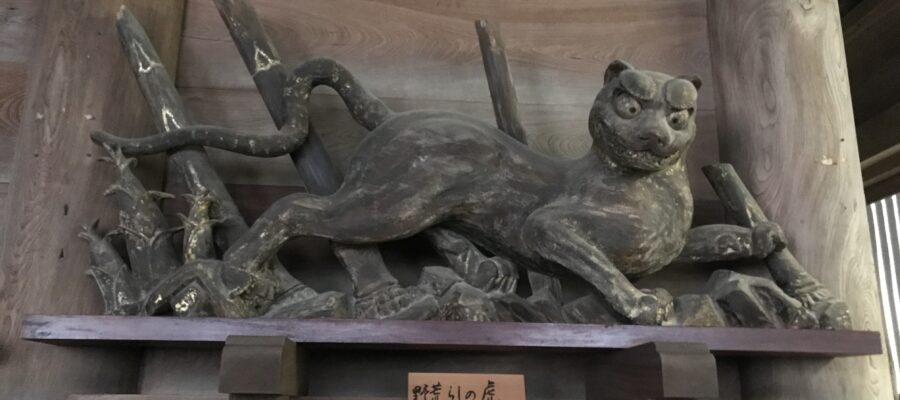紀の川に沿って
和歌山に所用があり、西国三十三霊場の第3番 風猛山 粉河寺(粉河観音宗総本山)まで足を延ばすことにしました。JR和歌山線でのんびりと周りの景色を見ながら出発です。紀の川に沿って、南北の山脈に挟まれながらの移動でした。
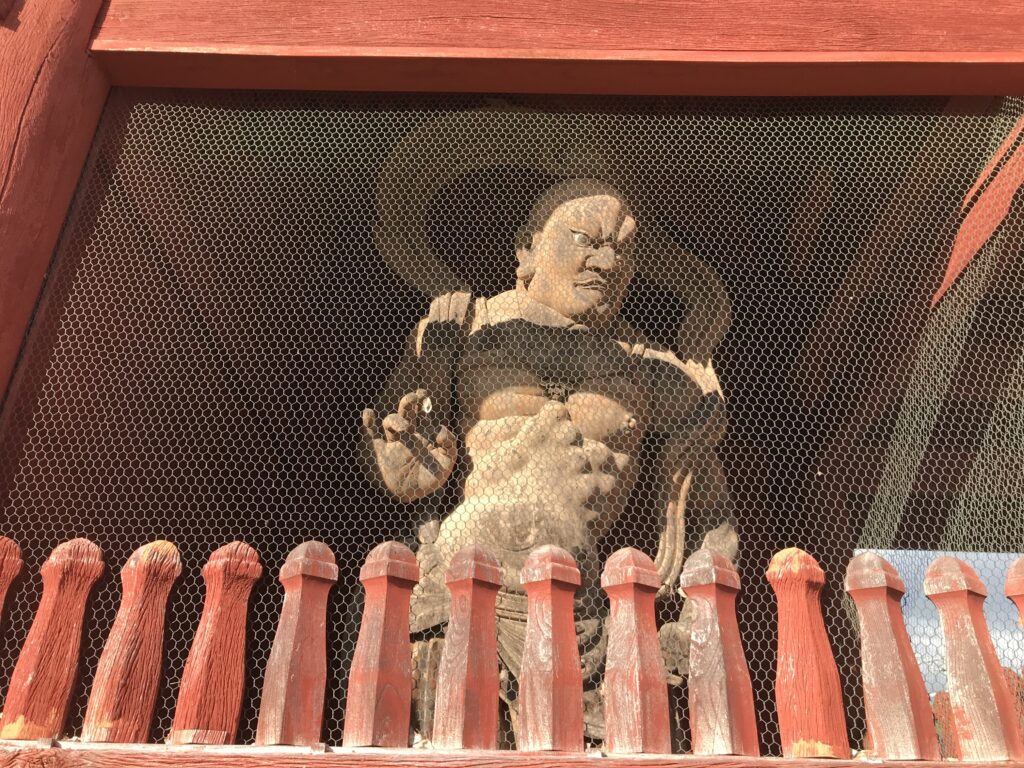
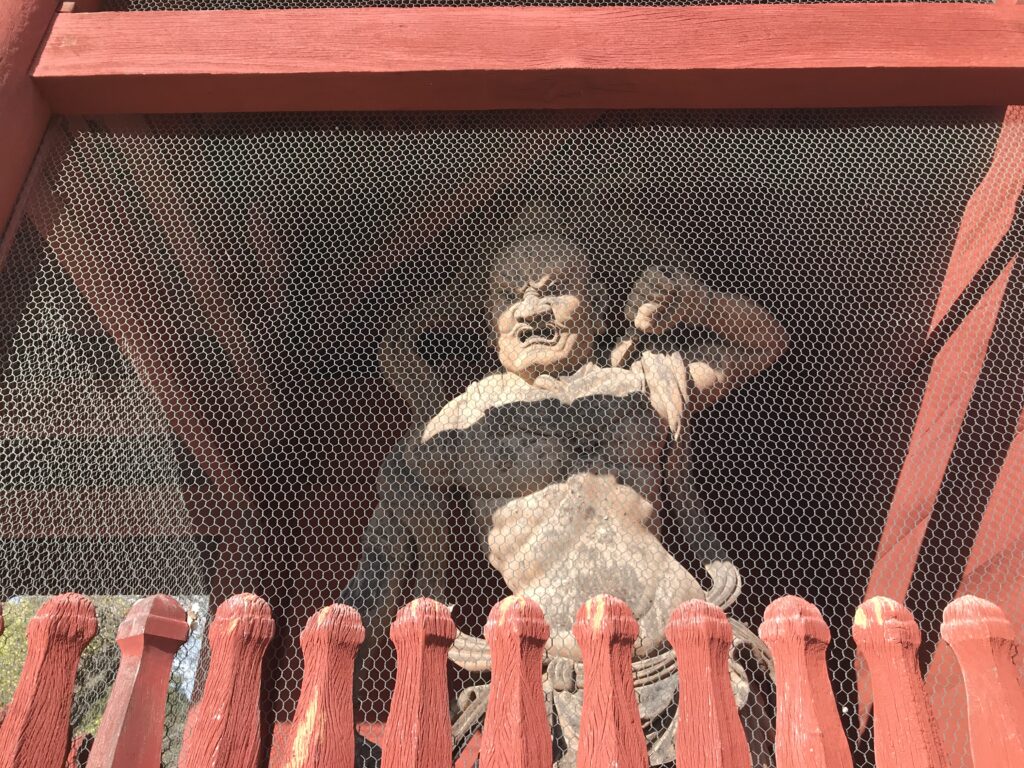
最寄駅の粉河から少し歩きますが、ここの大門では木造の立派な金剛力士が出迎えてくれます。道なりに進んでいく途中、定番の仏足石も安置されています。参道横の水路沿いには桜が植えられており、花が咲いた季節はさぞきれいだろうと想像できます。
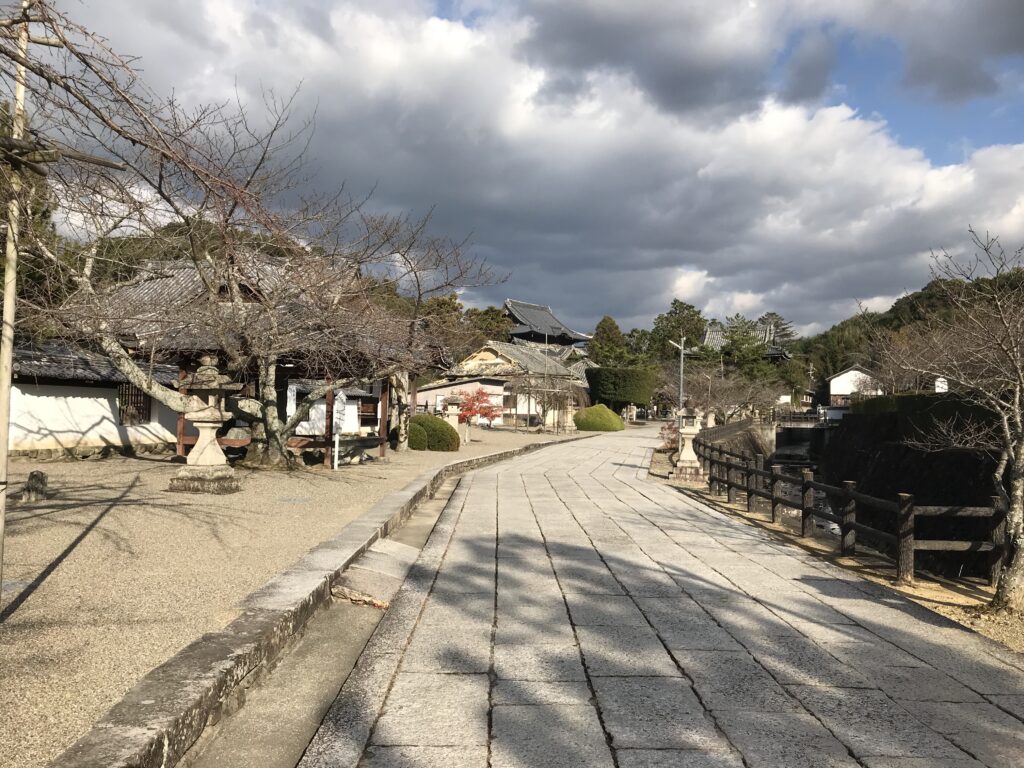
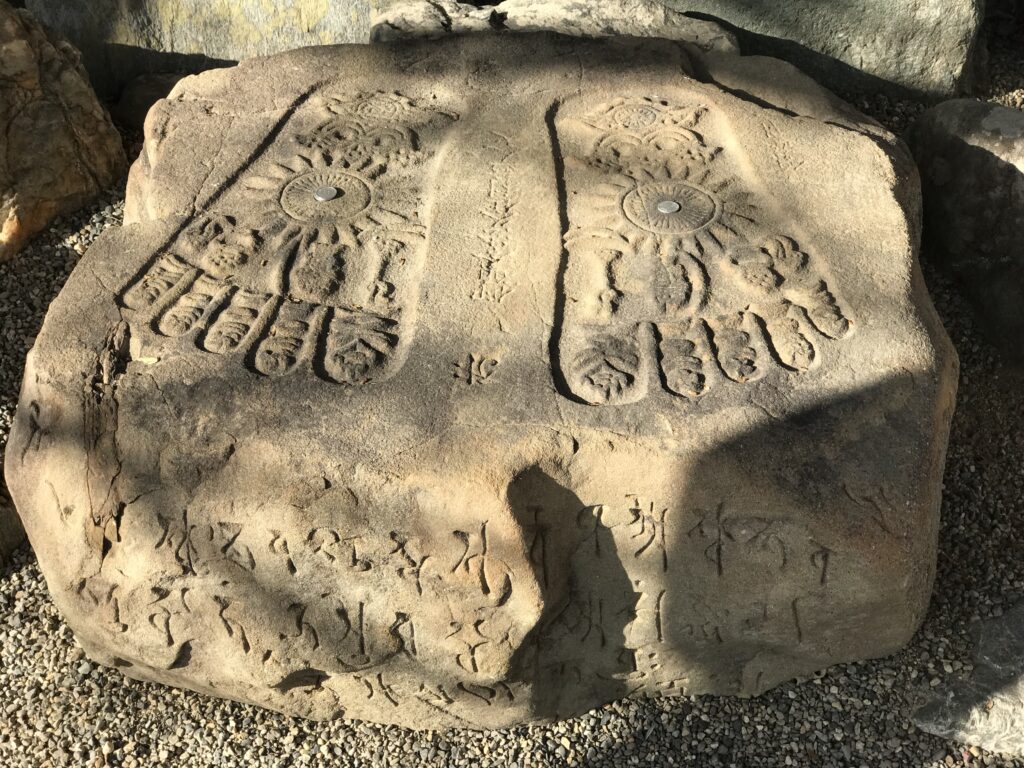
桃山時代の石庭
中門を入ってすぐに見たいのは、国指定名勝「粉河寺庭園」。桃山時代の石庭で、南国らしくソテツも植えられています。本堂の前庭とその下の広場との高低差を処理する土留めとしての役目も果たす、珍しい様式だそうです。
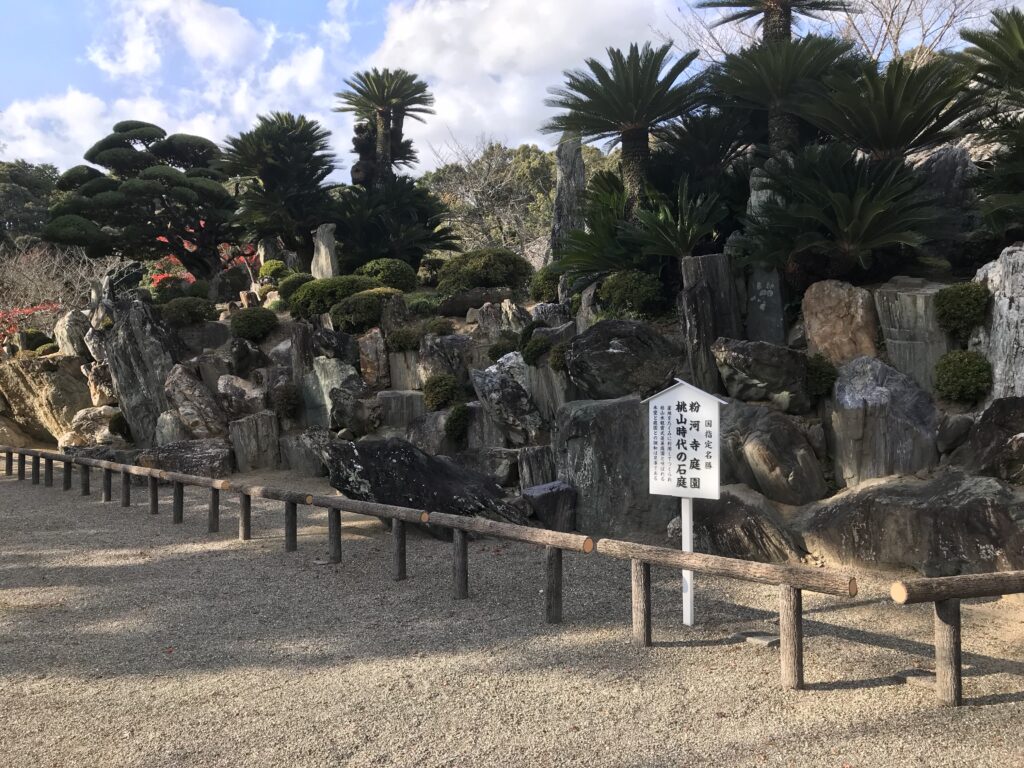
野荒らしの虎
本堂に入ると徳川吉宗が寄進した左甚五郎作の「野荒らしの虎」を見ることができました。解説によると、この虎が夜な夜な抜け出て田畑を荒らしたので目に釘が打たれて、動けなくしているそうです。左甚五郎の作品にはよくある話で、石清水八幡宮の猿、三井寺の龍も同じような話があり、如何に左甚五郎の作品が本物っぽく見えたかということでしょう。
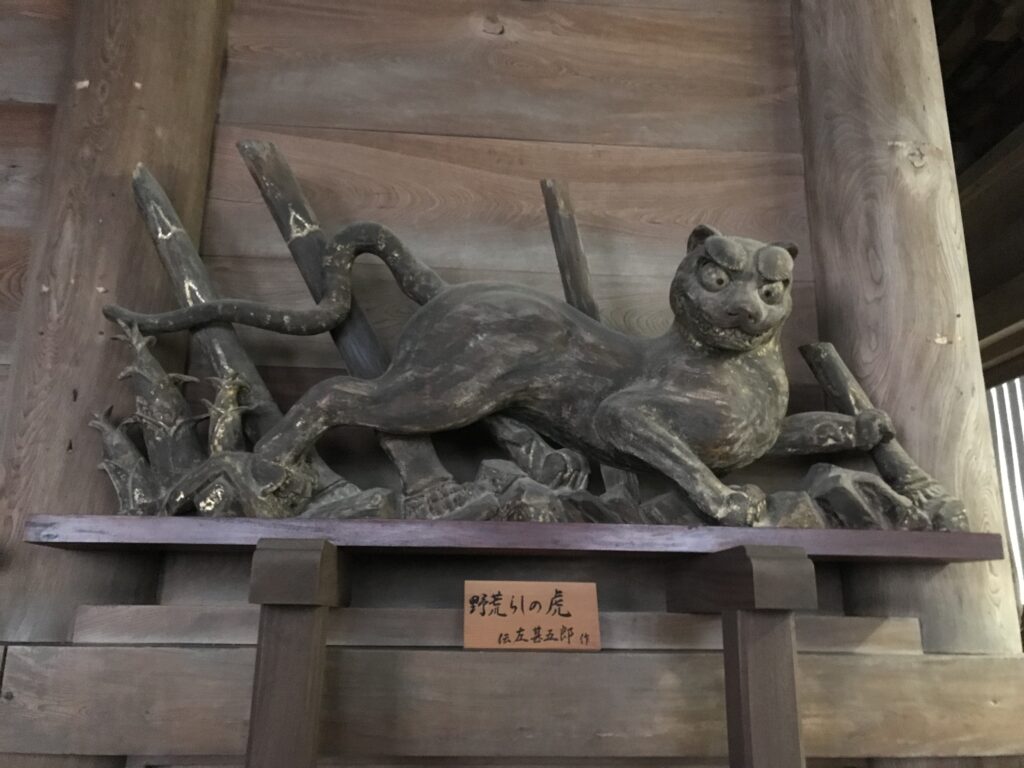
秀吉の兵乱にあう前は、広大で偉容を誇った堂塔伽藍も焼土と化し、多くの寺宝がほとんど焼失したそうです。往時を偲びながら帰路につきました。(完)
粉河寺の御朱印
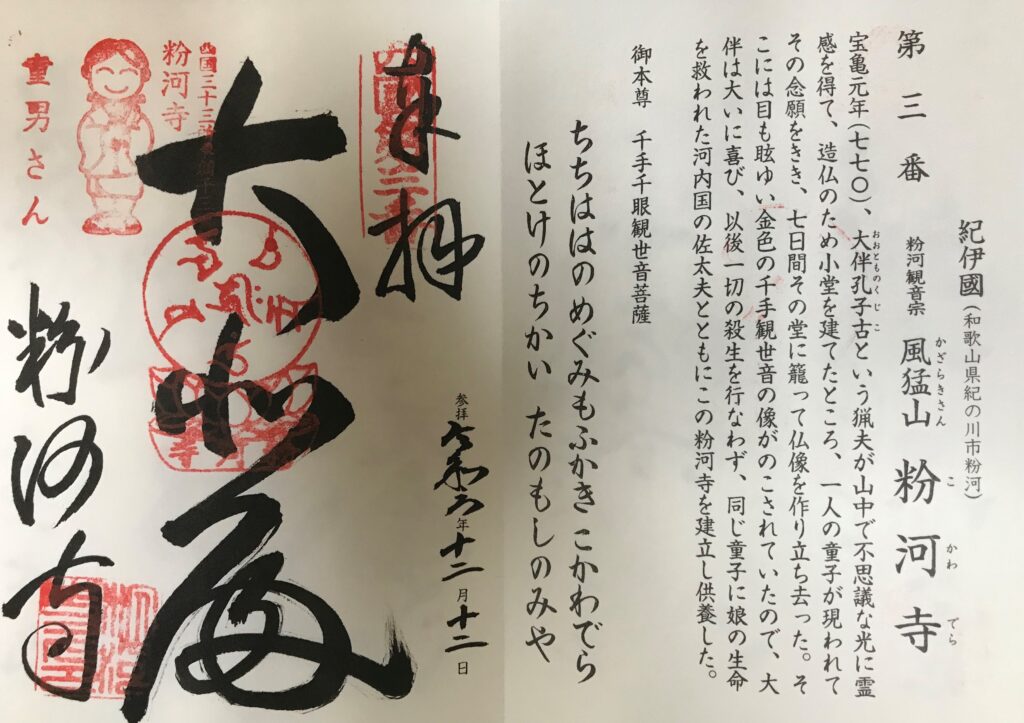
Kokawadera Temple (English)
Along the Kino River
I had business in Wakayama and decided to go to the third of the 33 sacred sites in the western part of the country, Fumouzan Kokawadera Temple (head temple of the Kokawa Kannon sect). I took the JR Wakayama Line, moving in the surrounding scenery between the mountain ranges of the north and south as I went along the Kino River.
It’s a bit of a walk from the nearest station, Kokawa, but you’ll be greeted by a magnificent wooden Vajrapani at the main gate here. On the way to the temple, you will see the classic Buddha’s Foot Stone. Cherry blossoms are planted along the waterway next to the path, and I can imagine how beautiful it must be when the flowers are in bloom.
Stone garden of the Momoyama period (Later 16th century)
As soon as you enter the middle gate, you will see the Kokawadera Temple Garden, a national scenic beauty. It is a stone garden dating back to the Momoyama period (1573-1603), with cycads planted in a tropical style. It is said to be a rare style of garden that also serves as an earthen retaining wall to deal with the difference in elevation between the front garden of the main hall and the plaza below it.
A wild tiger (No-Arashi-no-Tora)
As I entered the main hall, I could see a “wild tiger” by Jingoro Hidari, which was donated by Tokugawa Yoshimune, the 8th Shogun of Edo period. According to the explanation, this tiger has been driving nails into its eyes to keep the tiger from moving because it has been sneaking out at night and destroying the fields. This is a common story in Jingoro’s works, and the monkey in Ishimizu Hachimangu Shrine and the dragon in Miidera Temple also have similar stories, so it must be how Jingoro’s works looked so authentic.
It is said that before the war of Hideyoshi Toyotomi, the vast and magnificent temple buildings were burned to the ground, and most of the temple treasures were destroyed by fire. I returned home, remembering these historical record.
Temple Kokawadera (Français)
Le long de la rivière Kino
J’avais des affaires à régler à Wakayama et j’ai décidé de me rendre au troisième des 33 sites sacrés de la partie occidentale du pays, le temple Fumouzan Kokawadera (temple principal de la secte Kannon de Kokawa). J’ai pris la ligne JR Wakayama, me déplaçant dans le paysage environnant entre les chaînes de montagnes du nord et du sud en longeant la rivière Kino.
Il faut marcher un peu depuis la gare la plus proche, Kokawa, mais vous serez accueilli par un magnifique Vajrapani en bois à l’entrée principale. Sur le chemin du temple, vous verrez la classique pierre du pied de Bouddha. Des cerisiers en fleurs sont plantés le long du cours d’eau à côté du chemin, et je peux imaginer à quel point ce doit être beau lorsque les fleurs sont en fleurs.
Jardin en pierre de la période Momoyama (fin du XVIe siècle)
Dès que vous aurez franchi la porte du milieu, vous verrez le jardin du temple Kokawadera, une beauté scénique nationale. Il s’agit d’un jardin en pierre datant de la période Momoyama (1573-1603), avec des cycas plantés dans un style tropical. On dit que c’est un style de jardin rare qui sert également de mur de soutènement en terre pour gérer la différence d’élévation entre le jardin avant du hall principal et la place en dessous.
Un tigre sauvage (No-Arashi-no-Tora)
En entrant dans le hall principal, j’ai pu voir un “tigre sauvage” de Jingoro Hidari, qui a été offert par Tokugawa Yoshimune, le 8e shogun de la période Edo. Selon l’explication, ce tigre s’est enfoncé des clous dans les yeux pour l’empêcher de bouger, car il se faufilait la nuit et détruisait les champs. Cette histoire est courante dans les œuvres de Jingoro. Le singe du sanctuaire Ishimizu Hachimangu et le dragon du temple Miidera ont également des histoires similaires, et c’est sans doute pour cela que les œuvres de Jingoro paraissaient si authentiques.
On dit qu’avant la guerre de Hideyoshi Toyotomi, les vastes et magnifiques bâtiments du temple ont été réduits en cendres, et la plupart des trésors du temple ont été détruits par le feu. Je suis rentré chez moi en me rappelant ces faits historiques.
